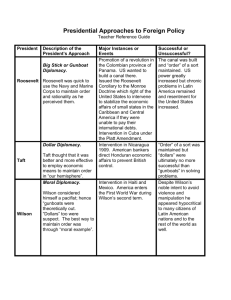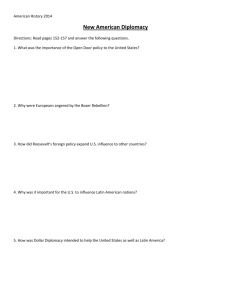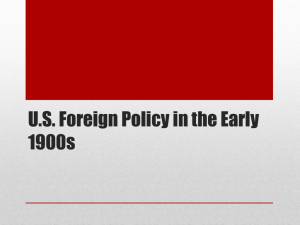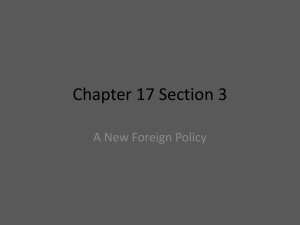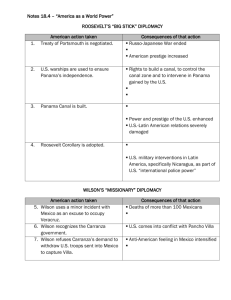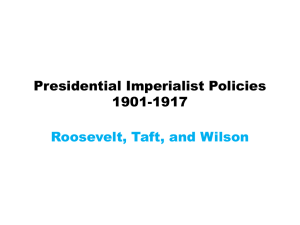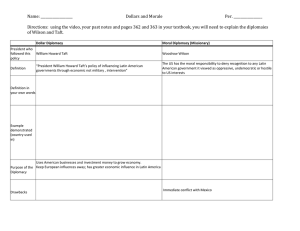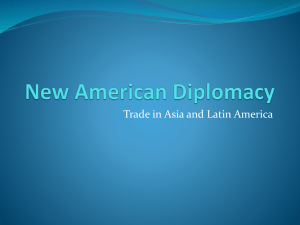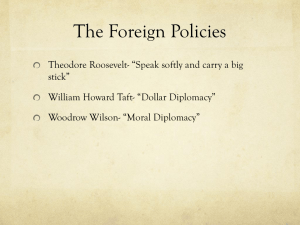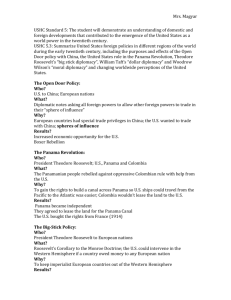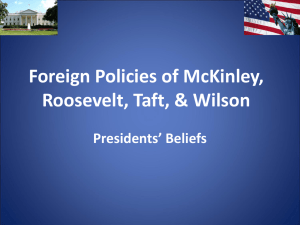Baggett/Ellis/Martin
advertisement
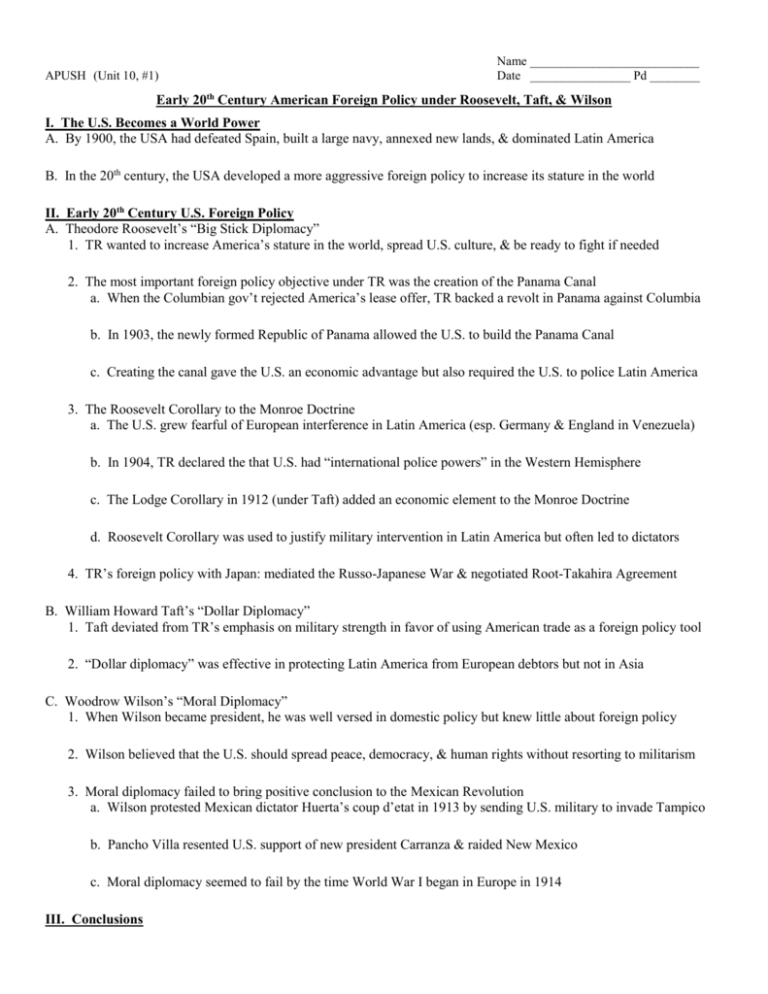
APUSH (Unit 10, #1) Name ___________________________ Date ________________ Pd ________ Early 20th Century American Foreign Policy under Roosevelt, Taft, & Wilson I. The U.S. Becomes a World Power A. By 1900, the USA had defeated Spain, built a large navy, annexed new lands, & dominated Latin America B. In the 20th century, the USA developed a more aggressive foreign policy to increase its stature in the world II. Early 20th Century U.S. Foreign Policy A. Theodore Roosevelt’s “Big Stick Diplomacy” 1. TR wanted to increase America’s stature in the world, spread U.S. culture, & be ready to fight if needed 2. The most important foreign policy objective under TR was the creation of the Panama Canal a. When the Columbian gov’t rejected America’s lease offer, TR backed a revolt in Panama against Columbia b. In 1903, the newly formed Republic of Panama allowed the U.S. to build the Panama Canal c. Creating the canal gave the U.S. an economic advantage but also required the U.S. to police Latin America 3. The Roosevelt Corollary to the Monroe Doctrine a. The U.S. grew fearful of European interference in Latin America (esp. Germany & England in Venezuela) b. In 1904, TR declared the that U.S. had “international police powers” in the Western Hemisphere c. The Lodge Corollary in 1912 (under Taft) added an economic element to the Monroe Doctrine d. Roosevelt Corollary was used to justify military intervention in Latin America but often led to dictators 4. TR’s foreign policy with Japan: mediated the Russo-Japanese War & negotiated Root-Takahira Agreement B. William Howard Taft’s “Dollar Diplomacy” 1. Taft deviated from TR’s emphasis on military strength in favor of using American trade as a foreign policy tool 2. “Dollar diplomacy” was effective in protecting Latin America from European debtors but not in Asia C. Woodrow Wilson’s “Moral Diplomacy” 1. When Wilson became president, he was well versed in domestic policy but knew little about foreign policy 2. Wilson believed that the U.S. should spread peace, democracy, & human rights without resorting to militarism 3. Moral diplomacy failed to bring positive conclusion to the Mexican Revolution a. Wilson protested Mexican dictator Huerta’s coup d’etat in 1913 by sending U.S. military to invade Tampico b. Pancho Villa resented U.S. support of new president Carranza & raided New Mexico c. Moral diplomacy seemed to fail by the time World War I began in Europe in 1914 III. Conclusions Change-Over-Time Document Analysis: American Foreign Policy Directions: Examine each document and determine what each document reveals about American foreign policy at that time. Write a one sentence description of America’s foreign policy stance as revealed by each document in the margin. Warm-Up Question: How did U.S. foreign policy change in the 100+ years from Washington (1790s) to Theodore Roosevelt (1900s)? Name __________________________ U.S. Foreign Policy at the Turn of the Century APUSH (Unit 10) Country China Cuba Dominican Republic Hawaii Reasons for U.S. Intervention? How did the U.S. Intervene? Impact on the United States? Date _______________ Pd ________ Impact on Native People? Country Mexico Panama Philippines Puerto Rico Reasons for U.S. Intervention? How did the U.S. Intervene? Impact on the United States? Impact on Native People?
